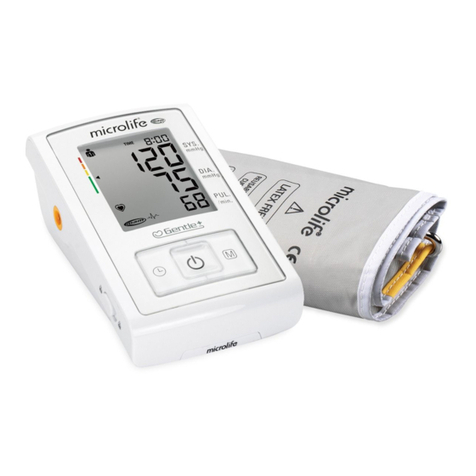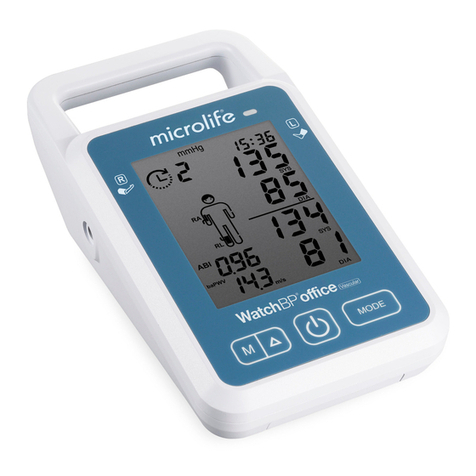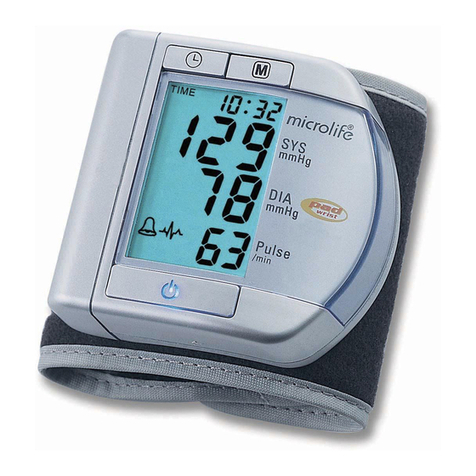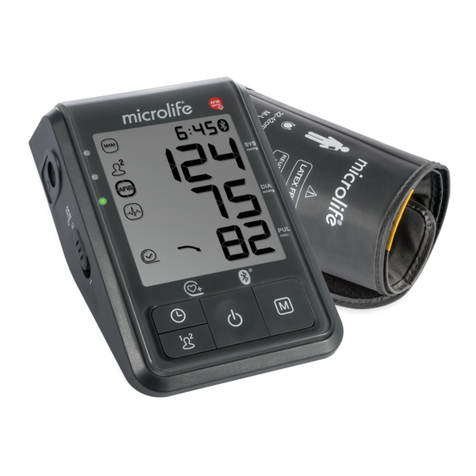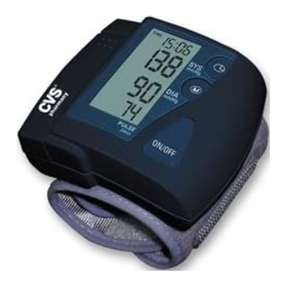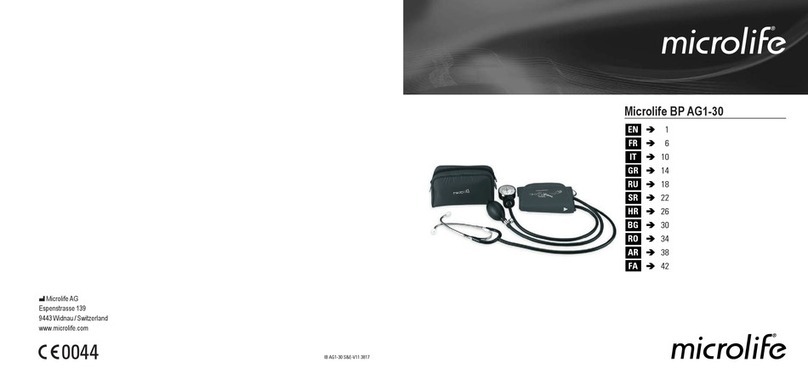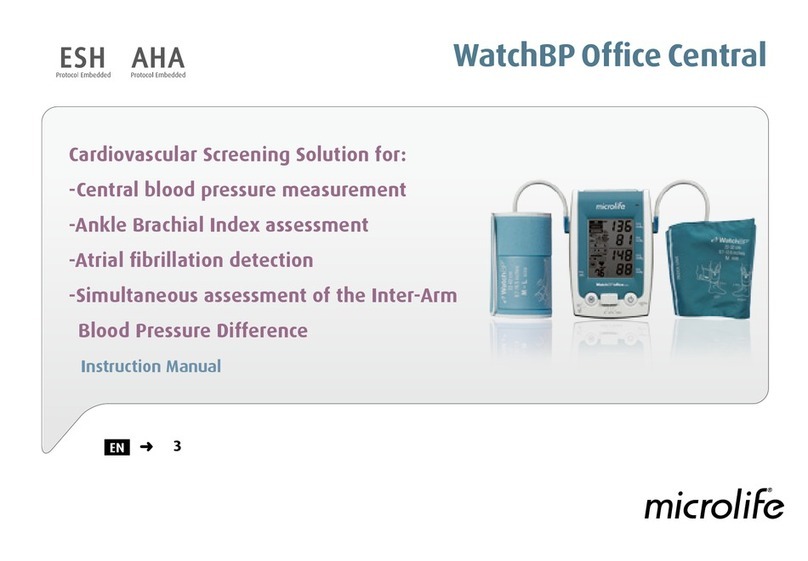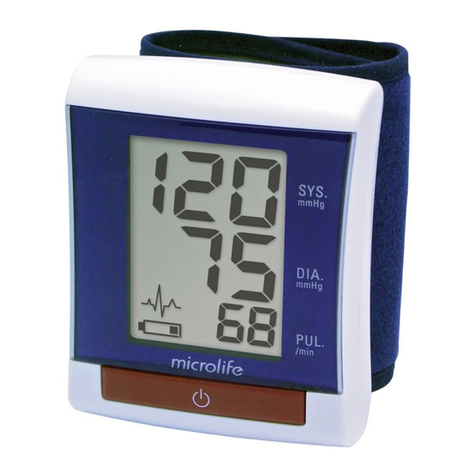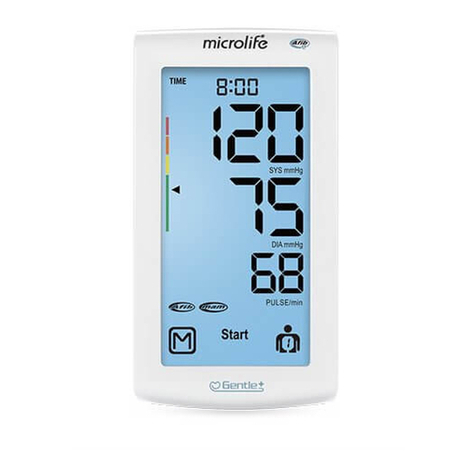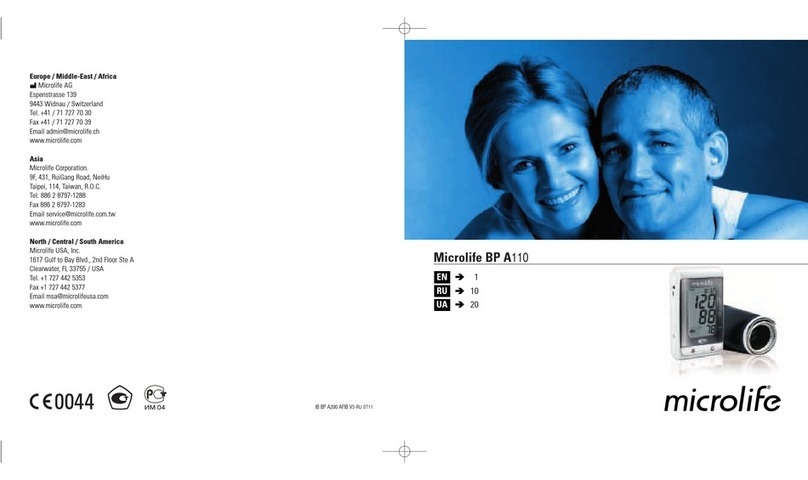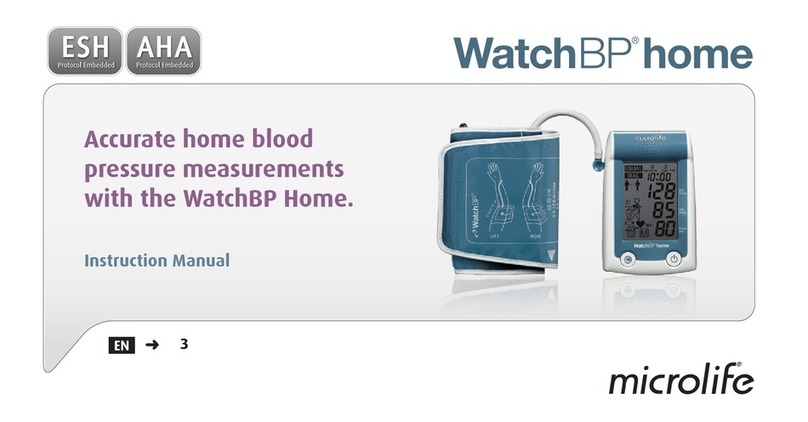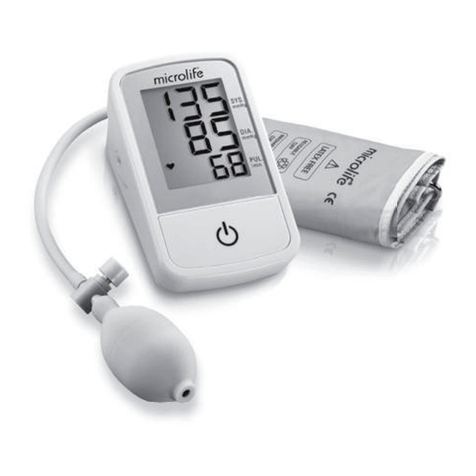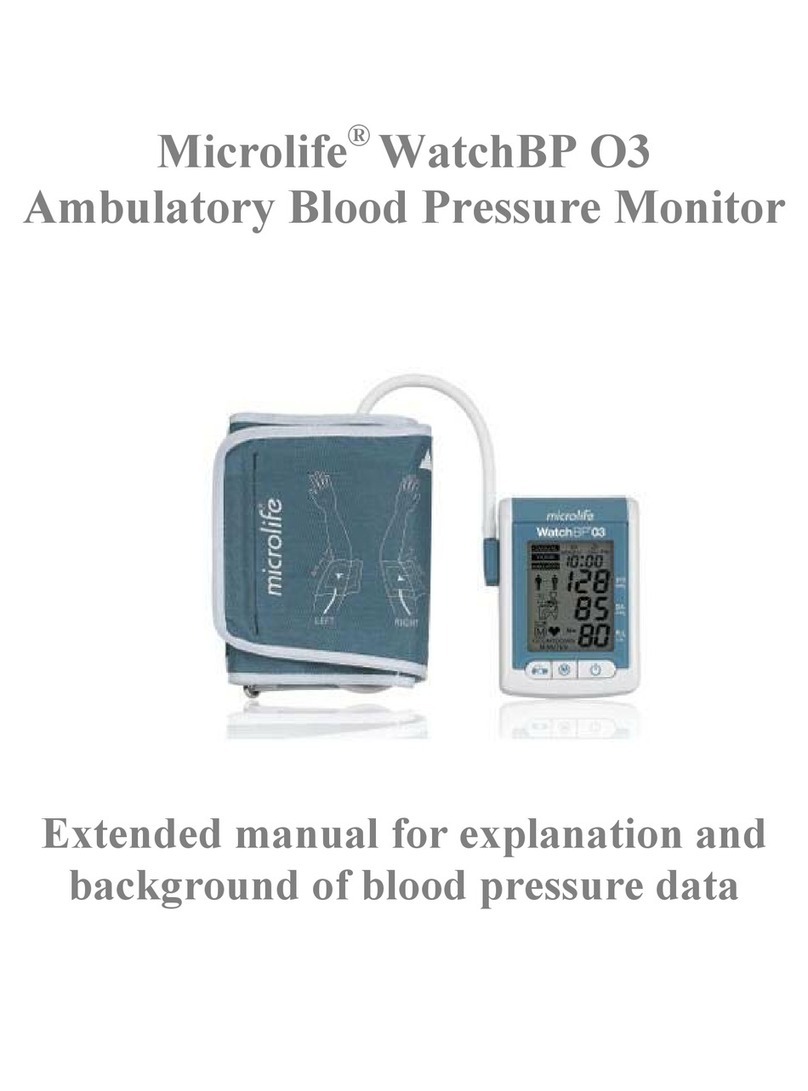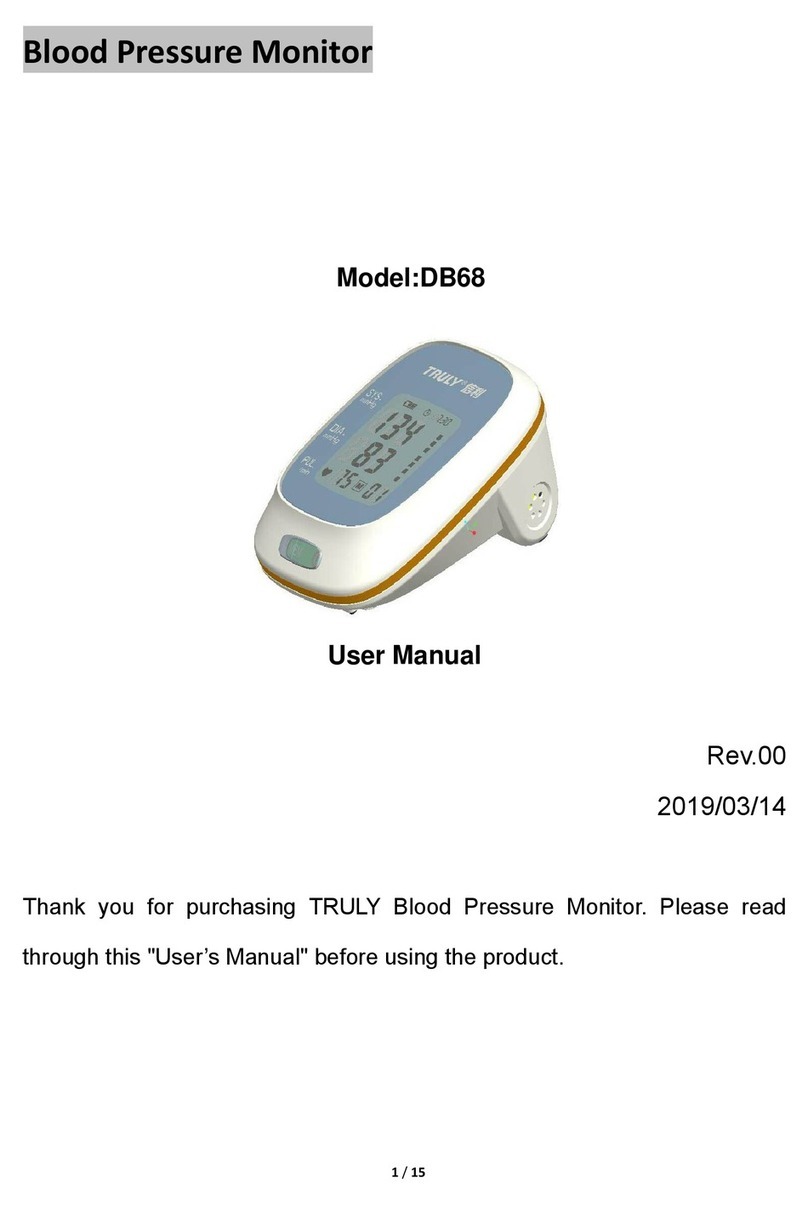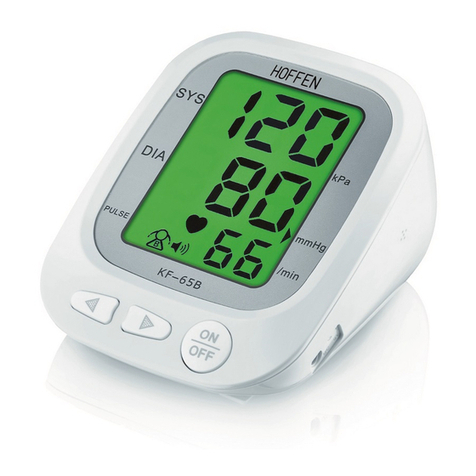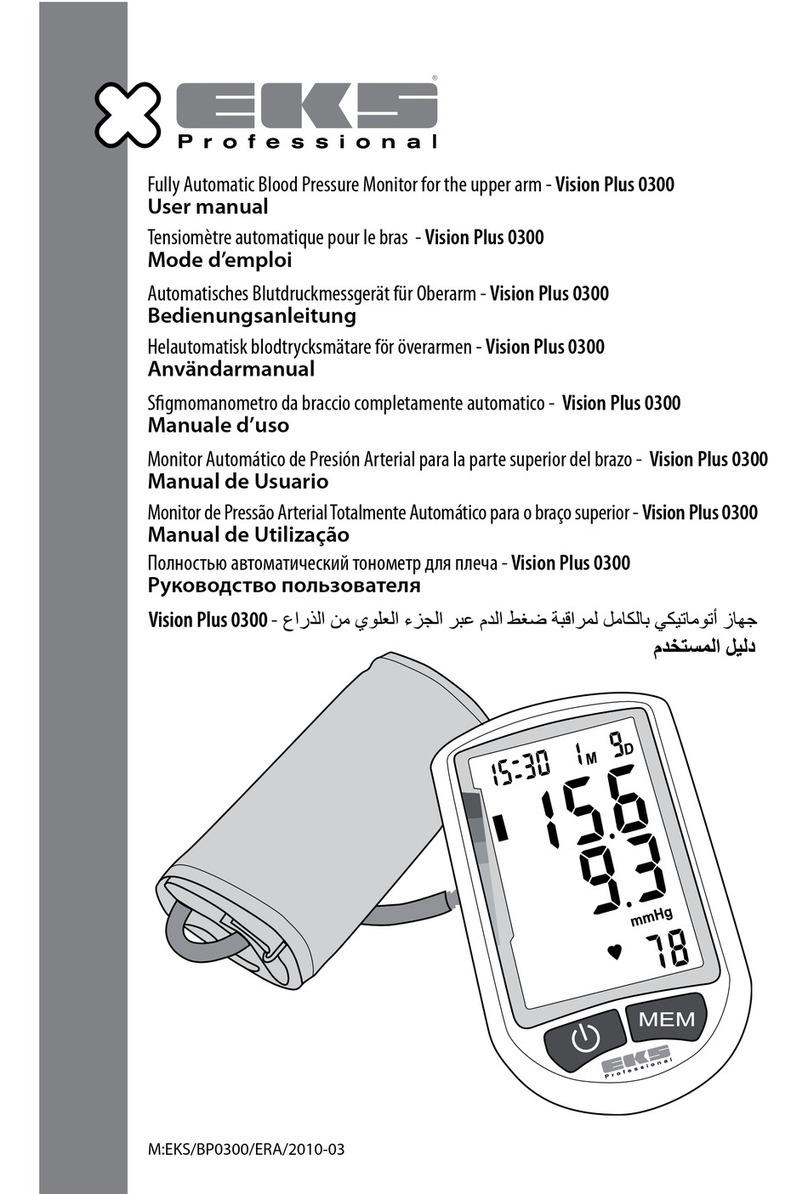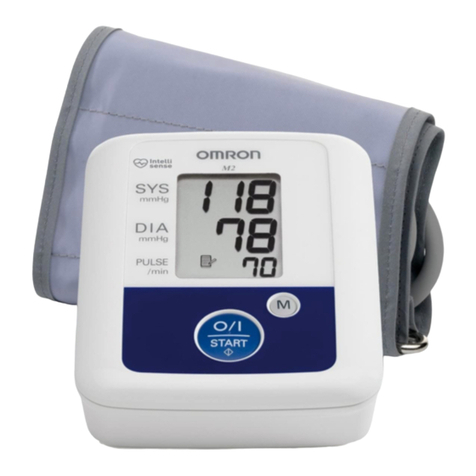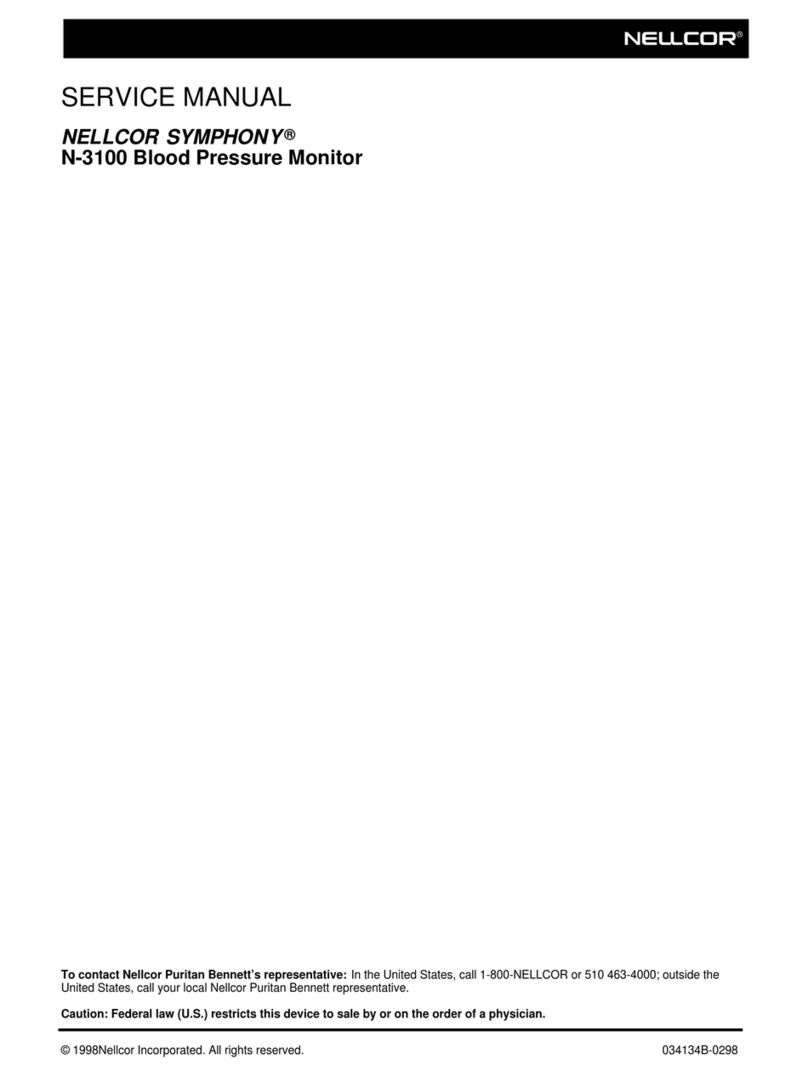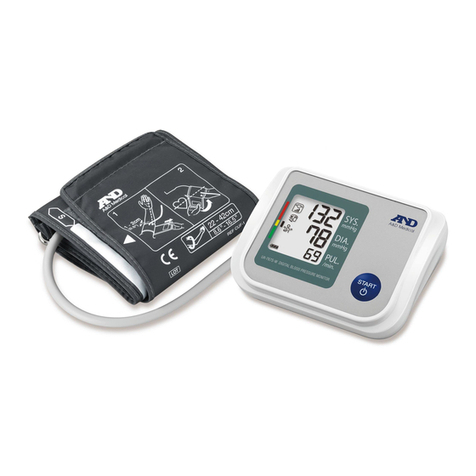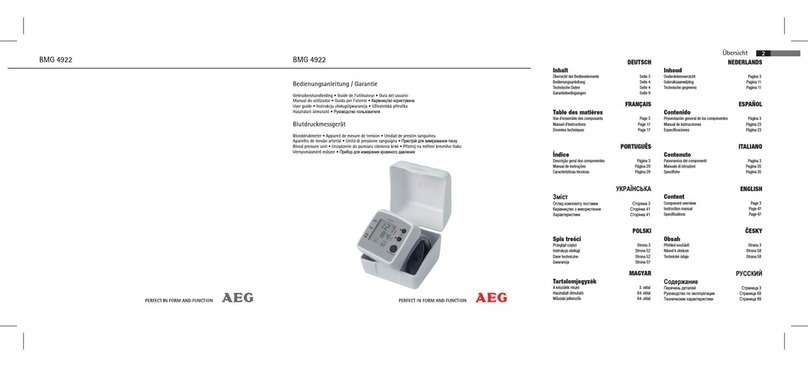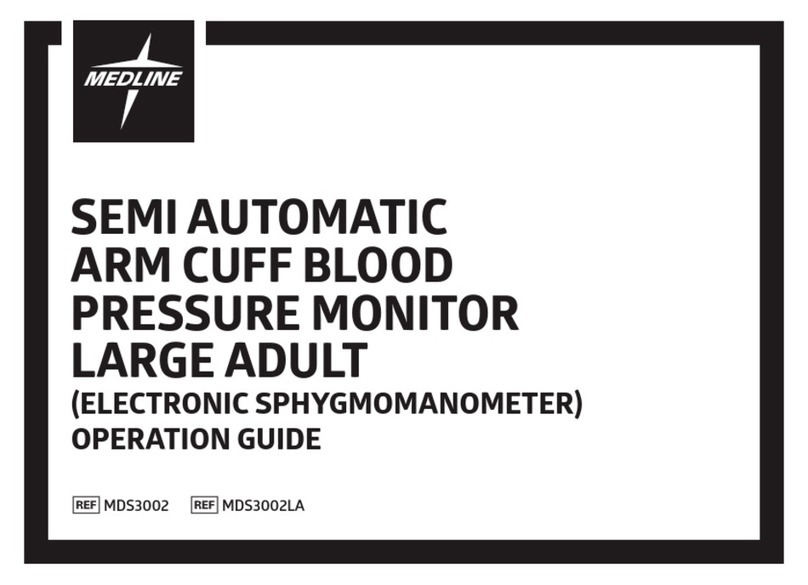2
1. Introduction
1.1. Features of your Automatic Blood Pressure Monitor
Your blood pressure monitor with Mi rolife Averaging Mode, Irregular Heartbeat
Dete tion, and PC Link Blood Pressure Analyzer Software is a fully automati digital
blood pressure measuring devi e for use by adults on the upper arm at home or in
your do tor’s/nurse’s offi e. It enables very fast and reliable measurement of systoli
and diastoli blood pressure as well as pulse through the os illometri method. This
devi e offers lini ally proven a ura y and has been designed to be user friendly.
Before using, please read this instru tion manual arefully and then keep it in a safe
pla e. Please onta t your do tor for further questions on the subje t of blood pres-
sure and its measurement.
Attention!
1.2. Important information about self-measurement
• Self-measurement means control, not diagnosis or treatment. Unusual values
must always be dis ussed with your do tor. Under no circumstances should
you alter the dosages of any drugs prescribed by your doctor.
•The pulse display is not suitable for he king the frequen y of heart pa emakers!
•In ases of irregular heartbeat, measurements made with this instrument should
only be evaluated after onsultation with your do tor.
Electromagnetic interference:
The devi e ontains sensitive ele troni omponents. Avoid strong ele tri al or ele -
tromagneti fields in the dire t vi inity of the devi e (e.g. mobile telephones,
mi rowave ovens). These an lead to temporary impairment of the measuring a ura y.
2. Important Information on Blood Pressure and its Measurement
2.1. How does high or low blood pressure arise?
Your level of blood pressure is determined in the ir ulatory enter of the brain and
adjusts to a variety of situations through feedba k from the nervous system. To adjust
blood pressure, the strength and speed of the heart (Pulse), as well as the width of
ir ulatory blood vessels is altered. Blood vessel width is ontrolled by fine mus les
in the blood vessel walls.
Your level of arterial blood pressure hanges periodi ally during heart a tivity: During
the “blood eje tion” (Systole) the value is highest (systoli blood pressure value). At
the end of the heart’s “rest period” (Diastole) pressure is lowest (diastoli blood pres-
sure value).
